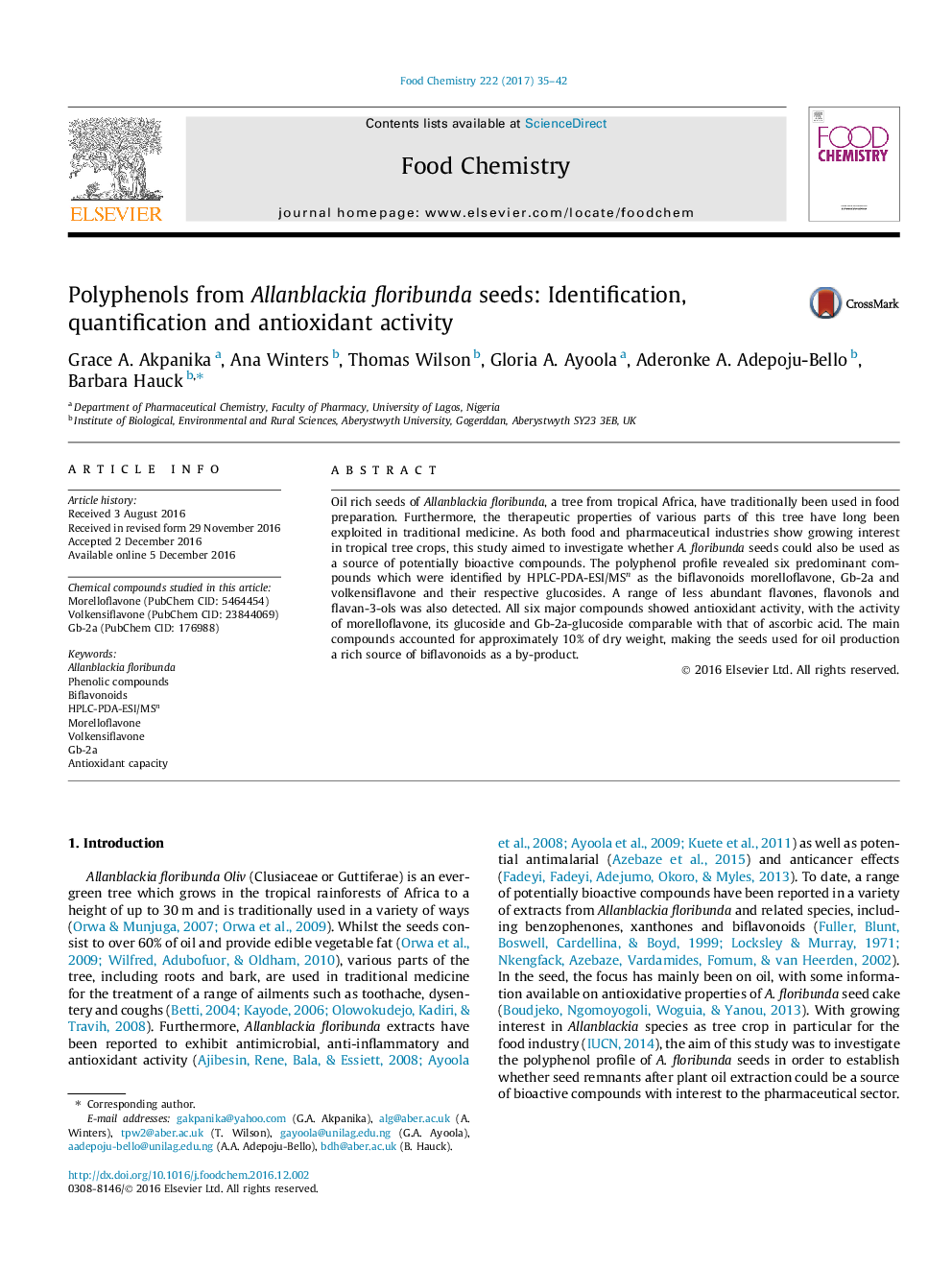| Article ID | Journal | Published Year | Pages | File Type |
|---|---|---|---|---|
| 5134017 | Food Chemistry | 2017 | 8 Pages |
â¢The phenolic profile of Allanblackia floribunda seeds was studied by LC-PDA-MSn.â¢A. floribunda seeds contain approximately 10% biflavonoids on a dry weight basis.â¢Morelloflavone, volkensiflavone and Gb-2a were the predominant biflavonoids.â¢Antioxidant activity of the main biflavonoids was comparable with ascorbic acid.
Oil rich seeds of Allanblackia floribunda, a tree from tropical Africa, have traditionally been used in food preparation. Furthermore, the therapeutic properties of various parts of this tree have long been exploited in traditional medicine. As both food and pharmaceutical industries show growing interest in tropical tree crops, this study aimed to investigate whether A. floribunda seeds could also be used as a source of potentially bioactive compounds. The polyphenol profile revealed six predominant compounds which were identified by HPLC-PDA-ESI/MSn as the biflavonoids morelloflavone, Gb-2a and volkensiflavone and their respective glucosides. A range of less abundant flavones, flavonols and flavan-3-ols was also detected. All six major compounds showed antioxidant activity, with the activity of morelloflavone, its glucoside and Gb-2a-glucoside comparable with that of ascorbic acid. The main compounds accounted for approximately 10% of dry weight, making the seeds used for oil production a rich source of biflavonoids as a by-product.
